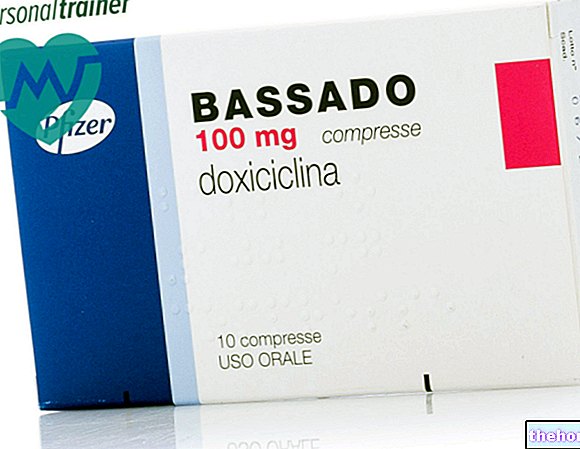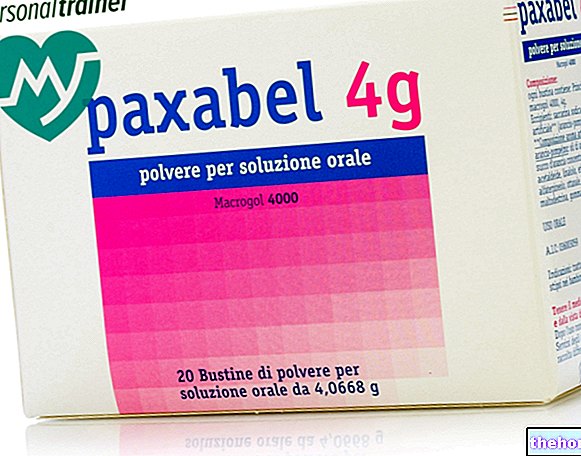Active ingredients: Ranitidina (Ranitidina Hydrochloride)
Ranitidina -ratiopharm 300 mg film-coated tablets
The package inserts of Ranitidina - Generic Drug are available for pack sizes:- Ranitidina -ratiopharm 300 mg film-coated tablets
- Ranitidina-ratiopharm 150 mg film-coated tablets
Why is Ranitidina - Generic Drug used? What is it for?
Ranitidina-ratiopharm is a gastrointestinal drug. It belongs to the class of drugs known as histamine H2 receptor antagonists, which reduce gastric acid secretion.
In adults Ranitidina-ratiopharm is used in the treatment of diseases of the upper gastrointestinal tract to reduce gastric acid secretion, in the following cases:
- duodenal ulcer
- benign gastric ulcer
- inflammation of the esophagus caused by a reflux of stomach acid (reflux esophagitis)
- Zollinger-Ellison syndrome
In children (3 to 18 years old) Ranitidina-ratiopharm is used in the following cases:
- short-term treatment of peptic ulcer (ulcers in the part of the intestine that connects to the duodenum)
- treating inflammation of the esophagus (the tube between your mouth and stomach) caused by too much stomach acid. This can cause pain or discomfort sometimes known as "indigestion", "dyspepsia" or "heartburn".
Contraindications When Ranitidine - Generic Drug should not be used
Do not take Ranitidine -ratiopharm
- If you are allergic to ranitidine or any of the other ingredients of this medicine (listed in section 6).
Precautions for use What you need to know before taking Ranitidina - Generic Drug
Talk to your doctor or pharmacist before taking Ranitidine-ratiopharm.
- if your kidney function is impaired. In elderly patients, renal function should be checked prior to administering ranitidine. In this case, the dosage of ranitidine will be carefully determined by your doctor (see section 3: "How to take Ranitidine -ratiopharm").
- If you have a history of porphyria (a serious disease whose symptoms include severe stomach pain, mental confusion and muscle weakness).
- if you are taking medicines containing theophylline (another active substance). Blood theophylline levels need to be monitored; Theophylline dosage may need to be adjusted if administered concomitantly with ranitidine (see section "Other medicines and and Ranitidine -ratiopharm).
- if you are elderly, if you have chronic lung disease, diabetes or problems with your immune system, you may have an increased risk of developing community-acquired pneumonia.
- if you have a duodenal and / or gastric ulcer.
Before starting treatment, your doctor must check for a bacterium called Helicobacter pylori. If you test positive for Helicobacter pylori, your doctor may prescribe a medicine to kill ('eradicate') this bacterium.
Treatment with Ranitidina-ratiopharm can mask the symptoms associated with stomach cancer. Therefore, in the presence of gastric ulcer, your doctor must rule out the possible malignant nature of the gastric ulcer before starting therapy with Ranitidina-ratiopharm.
If you are on prolonged or high dose Ranitidine-ratiopharm treatment, your doctor should regularly monitor both your liver function and your total blood cell count.
Interactions Which drugs or foods can modify the effect of Ranitidine - Generic Drug
Tell your doctor or pharmacist if you are taking, have recently taken or might take any other medicines.
Some medicinal products may interact with Ranitidina-ratiopharm, including:
- coumarin anticoagulants (e.g. warfarin, for blood thinning)
- Triazolam, midazolam (mood-enhancing drugs)
- procainamide and N-acetyl-procainamide (used for irregular heartbeat)
- glipizide (medicine used to treat diabetes)
- theophylline (drug used to treat asthma)
- ketoconazole and other antifungal agents.
- atazanavir, delaviridine (used to treat HIV infection)
- gefitinib (used to treat lung cancer).
You must always take medicines that reduce stomach acid (eg antacids, sucralfate) 2 hours after taking Ranitidina-ratiopharm, in order to avoid a reduction in the effectiveness of Ranitidina-ratiopharm.
Ranitidine-ratiopharm with alcohol
The use of Ranitidina-ratiopharm can potentiate the effects of alcohol.
Warnings It is important to know that:
Pregnancy and breastfeeding
If you are pregnant or breastfeeding, think you may be pregnant or are planning to have a baby, ask your doctor or pharmacist for advice before taking this medicine.
If you are pregnant, you may be pregnant, or if you are breast-feeding you should not take Ranitidina-ratiopharm, unless your doctor considers it essential.
Ranitidine passes into breast milk. Breastfeeding should be avoided while taking Ranitidina-ratiopharm.
Driving and using machines
Ranitidine-ratiopharm can cause hallucinations, confusion, anxiety, fatigue or lightheadedness. These effects may be enhanced by alcohol intake. Before driving or operating machinery, make sure you do not experience any of these effects.
Dose, Method and Time of Administration How to use Ranitidine - Generic Drug: Posology
Always take this medicine exactly as your doctor has told you. If in doubt, consult your doctor or pharmacist.
The film-coated tablets should be swallowed whole (unchewed) with a sufficient amount of liquid. The film-coated tablets can be taken both during and away from meals.
To avoid problems during administration, the tablets should be taken with a sufficient amount of liquid (e.g. with a glass of water) while sitting or standing.
The recommended dose is:
Adults and adolescents (from 12 years) with normal kidney function
Duodenal ulcers and benign gastric ulcers:
Unless otherwise prescribed by your doctor, the usual dose is one Ranitidine-ratiopharm 300 mg film-coated tablet in a single daily dose (equivalent to 300 mg ranitidine per day).
When should you take Ranitidina-ratiopharm 300 mg?
Take the film-coated tablet after dinner or in the evening before bedtime.
How long should you take Ranitidine-ratiopharm 300 mg for?
In many cases the ulcer heals within four weeks of treatment. In sporadic cases where the ulcer has not completely healed after this period, treatment should be continued for another four weeks at the same dose.
Inflammation of the esophagus (reflux esophagitis):
Unless otherwise prescribed by your doctor, the usual dose is one Ranitidine-ratiopharm 300 mg film-coated tablet taken as a single daily dose (equivalent to 300 mg ranitidine per day).
When should you take Ranitidina-ratiopharm 300 mg?
Take the film-coated tablet after dinner or in the evening before bedtime.
How long should you take Ranitidine-ratiopharm 300 mg for?
The treatment can last up to 8 weeks and, if necessary, up to 12 weeks.
Patients with extremely severe gastric acid secretion, e.g. patients with Zollinger-Ellison syndrome:
Unless otherwise prescribed by your doctor, the starting dose is one Ranitidine -ratiopharm 150 mg film-coated tablet three times a day (equivalent to 450 mg ranitidine a day).
If necessary, the dosage can be increased to 2-3 film-coated tablets of Ranitidine -ratiopharm 300 mg per day (equivalent to 600-900 mg ranitidine per day).
If gastric secretion values make it necessary, patients can be stabilized with higher dosages (up to 6 grams of ranitidine per day).
When should you take Ranitidina-ratiopharm 300 mg?
Ranitidine-ratiopharm 300 mg film-coated tablets can be administered with or without meals.
How long should you take Ranitidina -ratiopharm 300 mg for?
Your doctor will decide the duration of the treatment.
Children over 30 kg in weight and aged between 3 and 11 years
Your doctor will work out the right dose for you based on your child's weight.
Treatment of stomach or duodenal (small intestine) ulcers:
The usual dose is 2 mg for every kg of body weight, twice a day for four weeks. This dose can be increased to 4 mg for each kg, twice a day. Take each dose approximately 12 hours apart. The duration of treatment can be increased up to 8 weeks. 150 mg film-coated tablets of ranitidine are available for this purpose.
Treatment of heartburn caused by too much acid:
The usual dose is 2.5 mg for every kg of body weight, twice a day for two weeks. The dose can be increased to 5 mg for each kg, twice a day. Take each dose approximately 12 hours apart.
Patients with impaired renal function
Depending on the degree of renal impairment, your doctor will decide whether to administer lower doses of this medicine.
If you have severe renal impairment, you should not take more than 150 mg of ranitidine per day.
Ranitidine is eliminated by dialysis. Hemodialysis reduces the levels of ranitidine in the blood. Therefore, patients undergoing dialysis should take the above dose of ranitidine at the end of dialysis.
Tell your doctor or pharmacist if you feel that the effect of Ranitidina-ratiopharm 300 mg is too strong or too weak.
Overdose What to do if you have taken too much Ranitidine - Generic Drug
If you take more Ranitidina-ratiopharm than you should
Tell your doctor immediately. Treatment of ranitidine overdose is carried out on the basis of the symptoms of the overdose and the clinical picture.
If you forget to take Ranitidine-ratiopharm
Do not take a double dose to make up for a forgotten dose.
If you have any further questions on the use of this medicine, ask your doctor or pharmacist.
Side Effects What are the side effects of Ranitidine - Generic Drug
Like all medicines, this medicine can cause side effects, although not everybody gets them.
Uncommon (may affect up to 1 in 100 people):
- Tiredness
- Stomach pain, constipation or nausea (in most cases these conditions improve with continued treatment).
Rare (may affect up to 1 in 1,000 people):
- Hypersensitivity (allergic) reactions (e.g., an increase in eosinophilic cells in the blood, hives, fever, lowering of blood pressure, accumulation of fluid in the tissues, spasm of the larynx, bronchial spasm, chest pain) (these events have been reported after a single dose).
- restlessness
- Transient (temporary) changes in liver values (markers of liver function; these can only be detected by laboratory tests), which normalize with continued treatment or after termination of therapy.
- Skin rash, itching.
- Increased plasma creatinine values (a marker of kidney function, which can only be detected by laboratory tests). These mostly mild elevations generally normalize with continued ranitidine therapy.
Very rare (may affect up to 1 in 10,000 people):
- Changes in blood cell counts (decrease in a type of white blood cell [called agranulocytosis], decrease in all white blood cells or platelets, decrease in all blood cells [pancytopenia] or changes in the bone marrow [hypoplasia / aplasia of the marrow bone]). (These changes are usually reversible).
- Circulatory shock
- Reversible mental confusion, depression and hallucinations.
- Headache (sometimes severe), dizziness, involuntary movement disorders
- Reversible blurred vision. (there have been reports of blurred vision, indicative of an alteration in accommodation).
- Heart rhythm disturbances (increased or decreased heart rate, disturbances in the electrical signal that determines the heartbeat [atrioventricular block]).
- Vasculitis (small blood vessels can become swollen)
- Acute inflammation of the pancreas
- Diarrhea
- Hepatitis (inflammation of the liver) with or without jaundice. In many cases these symptoms disappeared upon discontinuation of treatment. -Erythema multiforme (a particular form of skin rash), hair loss.
- Joint pain, muscle pain.
- Inflammation of the kidney (interstitial nephritis).
- Reversible impotence, male breast enlargement, breast discharge.
Not known (frequency cannot be estimated from the available data)
- Dyspnea (difficulty in breathing)
Reporting of side effects
If you get any side effects, talk to your doctor or pharmacist. This includes any possible side effects not listed in this leaflet. You can also report side effects directly via the Italian Medicines Agency, Website: https://www.aifa.gov.it/content/segnalazioni-reazioni-avverse
By reporting side effects you can help provide more information on the safety of this medicine.
Expiry and Retention
Keep this medicine out of the sight and reach of children.
Do not use this medicine after the expiry date which is stated on the carton and blister.
Store in the original packaging
What Ranitidina-ratiopharm contains:
- The active ingredient is: ranitidine. Each film-coated tablet contains 300 mg of ranitidine (as hydrochloride)
- The excipients are:
hydrophobic silicon oxide, microcrystalline cellulose, croscarmellose sodium, magnesium stearate, hypromellose, polydextrose, triethyl citrate, macrogol, titanium dioxide (E 171).
What Ranitidine-ratiopharm looks like and contents of the pack
White, oblong, biconvex, film-coated tablets with a score line scored on both sides.
Ranitidine -ratiopharm is available in packs of 10, 20, 28,30, 50, 56, 60 and 100 film-coated tablets.
Not all pack sizes may be marketed.
Source Package Leaflet: AIFA (Italian Medicines Agency). Content published in January 2016. The information present may not be up-to-date.
To have access to the most up-to-date version, it is advisable to access the AIFA (Italian Medicines Agency) website. Disclaimer and useful information.
01.0 NAME OF THE MEDICINAL PRODUCT
RANITIDINA RATIOPHARM film-coated tablets
02.0 QUALITATIVE AND QUANTITATIVE COMPOSITION
150 mg :
each film-coated tablet contains 150 mg of ranitidine, as hydrochloride.
300 mg :
each film-coated tablet contains 300 mg of ranitidine as hydrochloride.
For the full list of excipients, see section 6.1.
03.0 PHARMACEUTICAL FORM
Film-coated tablet.
White, homogeneous, convex / cylindrical shaped, film-coated tablets, scored on one side.
The tablet can be divided into equal halves.
04.0 CLINICAL INFORMATION
04.1 Therapeutic indications
Ranitidine ratiopharm it is indicated for the treatment of diseases of the upper gastrointestinal tract, when associated with a reduction of gastric acid secretion.
150 mg and 300 mg :
Adults
• duodenal
• benign gastric ulcer
• reflux esophagitis
• Zollinger-Ellison syndrome
Children (3 to 18 years old)
• short-term treatment of peptic ulcer
• treatment of gastroesophageal reflux, including reflux esophagitis and symptomatic relief of gastroesophageal reflux disease.
150 mg :
• Long-term treatment of duodenal ulcer and benign gastric ulcer for the prevention of relapse. Long-term treatment is indicated in patients with a history of relapsing ulcer.
04.2 Posology and method of administration
For the adults they adolescents (from 12 years) with normal renal function, it is recommended to follow the following guidelines:
150 mg
Duodenal ulcer and benign gastric ulcer
two film-coated tablets of Ranitidine ratiopharm 150 mg (= 300 mg ranitidine) after dinner or in the evening before bedtime. Alternatively a film-coated tablet of Ranitidine ratiopharm 150 mg (= 150 mg ranitidine) twice a day, in the morning and in the evening. A 4-week treatment period can heal most ulcers. In sporadic cases, where the ulcer has not completely healed after a 4-week treatment, it is necessary to continue the treatment for another four weeks at the same dose.
In patients who have responded positively to this short-term treatment, and particularly in patients with a history of relapsing ulcer, it may be necessary to continue treatment for up to 12 months, with the administration of 1 film-coated tablet. Ranitidine ratiopharm 150 mg (= 150 mg ranitidine) per day before bedtime, for the prophylaxis of relapses . Patients should undergo regular endoscopic examinations.
For the " Reflux esophagitis two film-coated tablets of Ranitidine ratiopharm 150 mg (= 300 mg ranitidine) after dinner or in the evening before bedtime, alternatively a film-coated tablet of Ranitidine ratiopharm 150 mg (= 150 mg ranitidine) twice daily, morning and evening, for a period of 8 weeks (if needed up to 12 weeks).
Patients with elevated gastric acid secretion eg. Zollinger-Ellison syndrome
The starting dose should be one film-coated tablet Ranitidine ratiopharm 150 mg (= 150 mg ranitidine) three times a day (= 450 mg ranitidine / day). If necessary, the daily dose can be increased to 4-6 film-coated tablets Ranitidine ratiopharm 150 mg (= 600-900 mg of ranitidine per day).
If gastric secretion values make it necessary, patients can be stabilized with higher dosages. Daily dosages of up to 6 grams of ranitidine were administered.
The doses can be administered without regard to meals.
Children from 3 to 11 years and over 30Kg of weight
See section 5.2 Pharmacokinetic properties (special populations)
Treatment of acute peptic ulcer
The recommended oral dose for the treatment of peptic ulcer in children ranges from 4 mg / kg / day to 8 mg / kg / day given in two divided doses up to a maximum of 300 mg ranitidine per day, for a duration of 4 For patients not completely healed, an additional 4 weeks of therapy is indicated, as healing usually occurs after eight weeks of treatment.
Gastroesophageal reflux
The recommended oral dose for the treatment of gastroesophageal reflux in children ranges from 5 mg / kg / day to 10 mg / kg / day given in two divided doses in a maximum dose of 600 mg (the maximum dose can be given to children overweight or adolescents with severe symptoms).
The safety and efficacy in neonatal patients has not been established.
For adults And teenagers (from 12 years) with normal renal function, apply the following dosing guideline:
300 mg
Duodenal ulcer and benign gastric ulcer
One film-coated tablet of Ranitidine ratiopharm 300 mg (= 300 mg ranitidine) after dinner or in the evening before bedtime. A 4-week treatment period can heal most ulcers. In sporadic cases where the ulcer has not completely healed after a 4 week treatment, it is necessary to continue the therapy for another four weeks at the same dose.
For the " Reflux esophagitis , a film-coated tablet of Ranitidine ratiopharm 300 mg (= 300 mg ranitidine) after dinner or in the evening before bedtime. Therapy can be continued for up to 8 weeks or, if necessary, for up to 12 weeks.
Patients with elevated gastric acid secretion eg. Zollinger-Ellison syndrome
The starting dose should be one ranitidine 150 mg film-coated tablet three times daily (= 450 mg ranitidine / day). If necessary, the daily dose can be increased to 2-3 film-coated tablets Ranitidine ratiopharm 300 mg (= 600-900 mg of ranitidine per day).
If gastric secretion values make it necessary, patients can be stabilized with higher dosages. Daily dosages of up to 6 grams of ranitidine were administered.
The doses can be administered without regard to meals.
Children from 3 to 11 years and over 30Kg of weight
See section 5.2 Pharmacokinetic properties (special populations)
Treatment of acute peptic ulcer
The recommended oral dose for the treatment of peptic ulcer in children ranges from 4 mg / kg / day to 8 mg / kg / day given in two divided doses up to a maximum of 300 mg ranitidine per day for a duration of 4 weeks. For patients not completely healed, an additional 4 weeks of therapy is indicated, as healing usually occurs after eight weeks of treatment.
For this purpose, film-coated tablets containing 150 mg ranitidine are available.
Gastroesophageal reflux
The recommended oral dose for the treatment of gastroesophageal reflux in children ranges from 5 mg / kg / day to 10 mg / kg / day given in two divided doses in a maximum dose of 600 mg (the maximum dose can be given to children overweight or adolescents with severe symptoms).
The safety and efficacy in neonatal patients has not been established.
150 mg and 300 mg
Dosage guide in patients with renal impairment:
The following dosages are recommended, depending on creatinine clearance (ml / min) or serum creatinine level (mg / 100 ml):
* Serum creatinine values are reference and do not represent the same level of alteration in all patients with impaired renal function. This case especially applies to elderly patients in whom renal function is overestimated when assessed as a function of serum creatinine concentration.
The following formula can be used to obtain an estimate of creatinine clearance based on the measurement of serum creatinine (mg / 100 ml), age (expressed in years) and body weight (expressed in kg). In women the result must be multiplied by the factor 0.85.
Ranitidine is eliminated by dialysis. Hemodialysis reduces the levels of ranitidine in the blood. Therefore, patients undergoing dialysis should take the above doses of ranitidine at the end of dialysis.
Method and duration of administration
The film-coated tablets should be swallowed whole with a sufficient amount of liquid.
For more information about the duration of treatment see the information above.
04.3 Contraindications
Hypersensitivity to the active substance or to any of the excipients listed in section 6.1.
04.4 Special warnings and appropriate precautions for use
Before initiating therapy with ranitidine in patients with gastric ulcer, its possible malignant nature should be excluded as it has been found that ranitidine treatment can mask the symptoms associated with gastric cancer.
The plasma levels of the drug are increased in patients with severe renal insufficiency as ranitidine is excreted via the kidney. The dosage should be adjusted as described above in Guide to dosing in patients with impaired renal function, under paragraph 4.2.
Rare clinical reports suggest a relationship between ranitidine and acute porphyria. Ranitidine should therefore be avoided in patients with a history of acute porphyria.
In patients such as the elderly, people with chronic lung disease, diabetes or the immunocompromised, there may be an increased risk of contracting community acquired pneumonia.
A large epidemiological study showed an increased risk of community acquired pneumonia in patients still on H2 receptor antagonist ranitidine alone compared to those who had stopped treatment, with an observed adjusted relative risk increase of 1 , 82 (95% CI 1.26-2.64).
Regular monitoring of patients taking non-steroidal anti-inflammatory drugs concomitantly with ranitidine is recommended, especially in the elderly and those with a history of peptic ulcer.
In patients with duodenal ulcer or benign gastric ulcer the presence of Helicobacter pylori. In patients who test positive for Helicobacter pylori, elimination of the bacterium through eradication therapy is recommended if possible.
In the case of concomitant administration of ranitidine and theophylline, it is recommended to monitor the plasma concentrations of theophylline and to adjust, if necessary, the theophylline dose. (see section 4.5 "Interactions with other medicinal products and other forms of interaction").
In the case of long-term treatment or at high doses, liver and blood function tests should be performed.
04.5 Interactions with other medicinal products and other forms of interaction
Ranitidine has the ability to affect the absorption, metabolism or renal excretion of other medicinal products. Changes in pharmacokinetic parameters may necessitate a dosage adjustment of the affected medicinal product or discontinuation of treatment.
Interactions occur through several mechanisms, including:
1) Inhibition of the mixed function oxygenase system linked to cytochrome P450
Ranitidine at usual therapeutic doses does not potentiate the action of drugs that are inactivated by this enzyme system, such as diazepam, lidocaine, phenytoin, propranolol and theophylline.
There have been reports of altered prothrombin time with coumarin anticoagulants (e.g. warfarin). Due to the narrow therapeutic index, careful monitoring of increases and decreases in prothrombin time is recommended during concomitant treatment with ranitidine.
In clinical studies conducted, there was no evidence of a reduction in theophylline metabolism and / or an increase in plasma concentrations of theophylline due to ranitidine. However, some isolated reports have shown patients who experienced increases in plasma theophylline levels and the appearance of signs and symptoms of theophylline overdose during concomitant therapy with ranitidine and theophylline. Consequently, in case of concomitant treatment with ranitidine and theophylline, it is recommended to monitor the plasma concentrations of theophylline and to adjust the dose if necessary.
2) Competition for renal tubular secretion
Ranitidine, being partially eliminated via the cationic system, may affect the clearance of other medicinal products eliminated by this route. High doses of ranitidine (eg those used in the treatment of Zollinger-Ellison syndrome) may reduce the excretion of procainamide and N-acetylprocainamide, resulting in an increase in the plasma levels of these drugs.
3) Alteration of gastric pH
The bioavailability of some medicines can be affected. This may result in both increased absorption (eg triazolam, midazolam, glipizide) and decreased absorption (eg ketoconazole, atazanavir, delaviridine, gefitnib).
There is no evidence of an interaction between ranitidine and amoxicillin and metronidazole.
Absorption of ranitidine may be decreased if high doses (2 g) of sucralfate are administered concurrently. This effect does not occur if sucralfate is administered after a 2 hour interval.
The effect of alcohol can be enhanced by taking ranitidine.
04.6 Pregnancy and lactation
Pregnancy
Ranitidine crosses the placenta. As with all drugs, ranitidine should only be used in pregnancy if considered essential.
Feeding time
Ranitidine is excreted in breast milk. As with all medications, ranitidine should only be used during breastfeeding if considered essential.
04.7 Effects on ability to drive and use machines
Taking ranitidine can increase the effects of alcohol; undesirable effects such as headache, dizziness, fatigue, confusion, agitation and hallucinations may also occur. In such circumstances, the ability to react and to judge may be impaired, resulting in impaired ability to drive and operate machinery.
04.8 Undesirable effects
The following convention has been used for the classification of the frequency of undesirable effects: very common (≥1 / 10), common (≥1 / 100
The frequencies of adverse events were estimated based on post-marketing spontaneous reporting data.
Disorders of the blood and lymphatic system
Very rare: changes in blood cell counts (leukopenia, thrombocytopenia). These changes are usually reversible. Agranulocytosis or pancytopenia, in some cases accompanied by hypoplasia or aplasia of the bone marrow.
Disorders of the immune system
Rare: hypersensitivity reactions (e.g. eosinophilia, urticaria, angioneurotic edema, fever, laryngospasm, bronchospasm, hypotension and chest pain.
Very rare: anaphylactic shock.
These events have been reported following administration of a single dose.
Psychiatric disorders
Rare: agitation.
Very rare: reversible mental confusion, depression and hallucinations.
These events have mainly been reported in severely ill or elderly patients.
Nervous system disorders
Uncommon: fatigue.
Very rare: headache (sometimes severe), dizziness and reversible involuntary movement disorders.
Eye disorders
Very rare: reversible blurred vision.
Some cases of blurring of vision attributable to altered accommodation have been reported.
Cardiac pathologies
Very rare: as with other H2 antagonists, tachycardia, bradycardia and atrioventricular block.
Vascular pathologies
Very rare: vasculitis.
Gastrointestinal disorders
Uncommon: abdominal pain, diarrhea, constipation, nausea (These symptoms usually improve as treatment continues).
Very rare: acute pancreatitis
Hepatobiliary disorders
Rare: Transient and reversible changes were observed in liver function analyzes.
Very rare: hepatitis (hepatocellular, hepatocanalicular or mixed) with or without jaundice, these changes were reversible.
Skin and subcutaneous tissue disorders
Rare: skin rash, itching.
Very rare: erythema multiforme, alopecia
Musculoskeletal and connective tissue disorders
Very rare: musculoskeletal symptoms such as arthralgia and myalgia
Renal and urinary disorders
Rare: increase in plasma creatinine levels (this increase was generally mild and normalized during continued treatment)
Very rare: acute interstitial nephritis.
Diseases of the reproductive system and breast
Very rare: reversible impotence, symptoms and conditions of the mammary glands (such as gynecomastia and galatorrea).
Pediatric population
The safety of ranitidine was evaluated in children aged 0-16 years with acid-related conditions and was generally well tolerated, with an adverse event profile similar to that of adults. Limited long-term safety data are available, particularly with respect to growth and development.
04.9 Overdose
Symptoms and signs
Ranitidine has a very specific pharmacological activity so no particular problems are expected following overdose with ranitidine formulations.
Treatment
As appropriate, symptomatic and supportive therapy should be given.
05.0 PHARMACOLOGICAL PROPERTIES
05.1 Pharmacodynamic properties
Pharmacotherapeutic group: H2 receptor antagonist
ATC code: A02B A02
Ranitidine is a competitive histamine antagonist at the H2 receptor level. Ranitidine inhibits basal gastric secretion and gastric secretion stimulated by eg histamine, pentagastrin and food. Ranitidine reduces both the acid content and, to a lesser extent, the pepsin content and the volume of gastric juices.
In two studies conducted using therapeutic doses of 150 mg ranitidine twice daily, an average reduction in gastric acid secretion of 63% and 69% was induced over 24 hours, respectively, with reductions in nocturnal acid secretion of 73% and 90%. In two studies using the relapse prophylaxis posology (150 mg per night) ranitidine induced a mean reduction in gastric acid secretion of 42% and 69% within 24 hours, respectively.
After administration of therapeutic doses of 300 mg ranitidine per night, an average reduction in gastric acid secretion of 50 to 60% was induced within 24 hours, while nocturnal acid secretion was reduced by approximately 90%.
05.2 "Pharmacokinetic properties
Ranitidine is rapidly absorbed following oral administration and reaches peak blood concentrations after an average of 1.25 - 3 hours. The mean bioavailability of ranitidine tablets is approximately 50%, but the individual variation in bioavailability is large; in one study it was evaluated between 28-76%.
Following oral administration of 150 mg ranitidine, in tablet form, peak plasma concentrations of approximately 400 ng / ml are obtained, with a wide variation between individuals. After twelve hours, mean plasma levels are still around 40 ng / mL.
Following administration of 300 mg ranitidine, peak plasma concentrations of approximately 700-800 ng / ml are obtained. In numerous studies, the plasma concentration required to inhibit 50% of acid secretion in adults averaged 73-165 ng / ml.
Plasma protein binding is approximately 15%. The apparent volume of distribution in adults is 1.2-1.8 l / kg and in children 2.5 l / kg. Total clearance in adults averages 570-710 mL / min. In children and adolescents, a total clearance of nearly 800 ml / min / 1.73 m2 was observed with a large degree of variability.
Ranitidine is metabolised by the liver to ranitidine-N-oxide, N-desmethylranitidine, ranitidine-S-oxide and the analogous furanic acid.
Following oral administration, ranitidine is excreted via the kidneys and bile within 24 hours. About 30% of ranitidine is excreted as such, 6% as N-oxide, a minor amount in the de-methylated form, in the S-sulfoxide form and as furanic acid analogue.
In patients with normal renal function, excretion is predominantly effected via tubular secretion, with renal clearance of approximately 490-520 mL / min.
Following oral administration, the mean elimination half-life in patients with normal renal function is approximately 2.3-3 hours.
In patients with renal insufficiency the half-life is 2-3 times longer.
To a lesser extent, ranitidine crosses the cerebrospinal fluid.
Ranitidine crosses the placental barrier.
Following intravenous and oral administration during labor, the concentrations of ranitidine found in the umbilical cord of the unborn child correspond to the serum concentrations of the mother. Twelve hours after delivery, the concentrations of ranitidine in the blood of the unborn child are very low.
Ranitidine passes into breast milk. Two hours after ingestion, the average ratio between milk and plasma concentration is 1.9 (area: 0.6-20.9).
Special populations
Children (from 3 years old)
Limited pharmacokinetic data have shown that there are no significant differences in the half-life (range for children from 3 years of age: 1.7-2.2 h) and plasma clearance (range for children from 3 years of age) and plasma clearance (range for children from 3 years of age). years: 9 - 22 ml / min / kg) between healthy children and adults treated with oral ranitidine, when correction is made for body weight.
05.3 Preclinical safety data
Chronic toxicity studies have revealed no unknown side effects that could occur in men.
Furthermore, the chronic toxicity studies did not produce indications of particular risks of reproductive toxicity, mutagenicity or carcinogenicity.
06.0 PHARMACEUTICAL INFORMATION
06.1 Excipients
• Hydrophobic silicon oxide
• Microcrystalline cellulose
• Croscarmellose sodium
• Magnesium stearate
• Hypromellose
• Polydextrose
• Triethyl citrate
• Macrogol
• Titanium dioxide (E 171).
06.2 Incompatibility
Not relevant.
06.3 Period of validity
2 years.
06.4 Special precautions for storage
150 mg
Do not store above 25 ° C.
Store in the original packaging.
300 mg
Store in the original packaging.
06.5 Nature of the immediate packaging and contents of the package
Aluminum / Aluminum blister.
150 mg
Original pack with 10, 20, 28, 30, 50, 56, 60, 100 and 112 film-coated tablets.
300 mg
Original pack with 10, 20, 28, 30, 50, 56, 60 and 100 film-coated tablets.
Not all pack sizes may be marketed.
06.6 Instructions for use and handling
No special instructions.
07.0 MARKETING AUTHORIZATION HOLDER
ratiopharm GmbH
Graf Arco Strasse, 3
89070 Ulm
Germany
Legal representative for Italy: ratiopharm Italia Srl - Viale Monza, 270 - 20128 Milan - Italy
08.0 MARKETING AUTHORIZATION NUMBER
Ranitidina ratiopharm 150 mg film-coated tablets 10 tablets - AIC n. 038186019 / M
Ranitidina ratiopharm 150 mg film-coated tablets 20 tablets - AIC n. 038186021 / M
Ranitidina ratiopharm 150 mg film-coated tablets 28 tablets - AIC n. 038186033 / M
Ranitidina ratiopharm 150 mg film-coated tablets 30 tablets - AIC n. 038186045 / M
Ranitidina ratiopharm 150 mg film-coated tablets 50 tablets - AIC n. 038186058 / M
Ranitidina ratiopharm 150 mg film-coated tablets 56 tablets - AIC n. 038186060 / M
Ranitidina ratiopharm 150 mg film-coated tablets 60 tablets - AIC n. 038186072 / M
Ranitidina ratiopharm 150 mg film-coated tablets 100 tablets - AIC n. 038186084 / M
Ranitidina ratiopharm 150 mg film-coated tablets 112 tablets - AIC n. 038186096 / M
Ranitidina ratiopharm 300 mg film-coated tablets 10 tablets - AIC n. 038186108 / M
Ranitidina ratiopharm 300 mg film-coated tablets 20 tablets - AIC n. 038186110 / M
Ranitidina ratiopharm 300 mg film-coated tablets 28 tablets - AIC n. 038186122 / M
Ranitidina ratiopharm 300 mg film-coated tablets 30 tablets - AIC n. 038186134 / M
Ranitidina ratiopharm 300 mg film-coated tablets 50 tablets - AIC n. 038186146 / M
Ranitidina ratiopharm 300 mg film-coated tablets 56 tablets - AIC n. 038186159 / M
Ranitidina ratiopharm 300 mg film-coated tablets 60 tablets - AIC n. 038186161 / M
Ranitidina ratiopharm 300 mg film-coated tablets 100 tablets - AIC n 038186173 / M
09.0 DATE OF FIRST AUTHORIZATION OR RENEWAL OF THE AUTHORIZATION
Determination no. 824/2008 of April 2008 Official Gazette no. 90 of 16/04/2008
10.0 DATE OF REVISION OF THE TEXT
July 2012




























